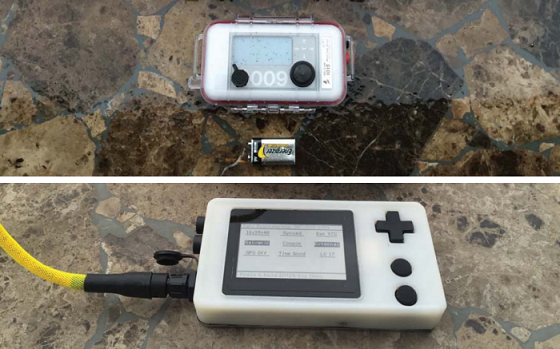A pocket-sized cathodic protection (CP) interrupter from Taku Engineering, LLC (Anchorage, Alaska, USA) is being modernized in 2019 to include high-speed waveform datalogging and automated waveform analysis.
 The two-channel CP interrupter incorporates a graphical user interface to simplify the setup of interruption cycles. According to the company, state-of-the-art technology is utilized to achieve its small size and six-day battery life. The system includes an extremely sensitive GPS engine, which allows it to acquire GPS details very quickly and in poor reception areas, such as indoors.
The two-channel CP interrupter incorporates a graphical user interface to simplify the setup of interruption cycles. According to the company, state-of-the-art technology is utilized to achieve its small size and six-day battery life. The system includes an extremely sensitive GPS engine, which allows it to acquire GPS details very quickly and in poor reception areas, such as indoors.
Taku recently developed, patented, and successfully tested a waveform analysis algorithm to determine accurate instant off readings from highly variable waveforms. This algorithm now runs on each Pi-1 unit, allowing users to obtain the most accurate CP potentials possible.
The updated testing system was one of 10 winners selected by a panel of corrosion industry experts for the 2019 MP Corrosion Innovation of the Year Awards, honored in March 2019 in Nashville, Tennessee, USA. Further technical details are available at the awards web site.
Big State Needs Small Size
According to Charlie Petrie, senior engineering technician and product development manager at the engineering firm, his company routinely performs CP surveys throughout Alaska. Considering the state’s enormous size, this made using traditional equipment problematic.
“Many of the locations we work at are rural and require small plane travel with multiple flights,” explains Petrie, who is a certified CP3—Cathodic Protection Technologist by NACE International. “GPS-synchronized CP interrupters have historically been large and bulky. Mobilizing to the field with enough interrupters for small jobs with several galvanic CP systems could require hundreds of pounds of equipment.”
The company says standard interrupters on the market are larger than a lunch box. At times, this forced them to ship the equipment ahead of a survey. Meanwhile, after completing the survey, this meant they often had to wait weeks afterward for the equipment to return. In addition, many of these usual interrupters required charging daily, Petrie says.
Evolution of the Interrupter
To address those concerns, Petrie notes that his company’s portable product has been extensively field tested in recent years and proven to be competent and reliable. This began with the first fleet of 20 field prototypes, which were built and deployed in June 2013.
“These performed well, but were limited by their pelican-case housing and text-based display,” Petrie says. “A second round of engineering produced a more compact, ergonomic device with a high-resolution graphical display.”

For the second generation, the microcontroller unit (MCU) was upgraded from an 8-bit MCU to a 16-bit MCU, with digital signal processing capabilities providing the extra processing power needed to integrate high-speed and continuous waveform capture and processing. In all, 24 field units were built in 2015, and these prototypes remain in use today with no attrition.
In 2017 and 2018, the company made a handful of physical changes to achieve an IP67 waterproof rating, which means the unit is fully protected from dust and can withstand submersion in 1 m of water for up to 30 minutes.
Commercially Available
These changes led to the commercial release of the patented product in 2019. The modernized Pi-1 is the size of a cell phone, weighing just 12 oz (340.2 g), and it gets six days of run time from a five-hour charge.
“The small size and light weight make it possible to transport enough interrupters for a large job in your backpack,” Petrie says. “And the six-day battery life allows multi-day jobs to be done on a single charge. The five-hour battery charge time means you can put over a day worth of charge per hour.”
Each testing unit has two galvanic interruption channels featuring solid state relays with a capacity of 1 A and 20 V each. It can also be paired with larger external relays to interrupt high-current CP sources, such as impressed current rectifiers. When connected to external high-current relays, a single unit can interrupt up to 10 high-current CP sources, according to the company.
With waveform logging and Bluetooth incorporated, the Pi-1 mated with a tablet computer or iPad can replace a field PC. “It will record continuous waveforms during close interval surveys and provide the most accurate and defensible data possible,” Petrie says.
Units can be powered from 5 to 20 V, using alternating current (AC) or direct current. The system uses non-polarity sensitive solid-state relays to switch CP current, and it has latching mechanical relays in parallel to allow CP current to flow through the device while it is powered down.
In addition, because each unit does not require a computer or smart device to set up, Petrie says it is simple to change interruption cycles on the fly.
Source: Taku Engineering, www.takuengineering.com. Contact Charlie Petrie—e-mail: charliepetrie@takuengineering.com.